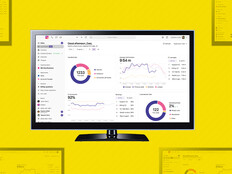Should a Healthcare Organization Develop an App?
Some healthcare organizations develop their own apps for radio-frequency identification and wayfinding, but app development and maintenance can be costly. Healthcare organizations need to either hire an internal team of developers with the skill set to develop apps for both iOS and Android platforms or use a reputable third-party developer that doesn’t leave app maintenance to its customers.
Due to the high cost, it’s important for organizations to explore their options and determine whether they really need to develop a new app. Is there something out there already developed for healthcare that will solve 80 to 90 percent of the problem? Organizations shouldn’t reinvent the wheel. Third-party vendor apps are continually updated with new features and capabilities, and some may also include electronic health record integration.
However, if an organization has a unique need or an innovative approach to solving a particular problem, internal app develop may make sense. Licensing the app could help to recoup costs and ensure a return on investment. Often, though, an off-the-shelf mobile app is sufficient.
RELATED: Find out how virtual physical therapy platforms go beyond the app.
App Customization Provides a Middle Ground for Healthcare
Apps specific to the healthcare industry often will work across health systems due to hospitals and clinics having many of the same needs and requirements. In many cases, healthcare organizations can work with app vendors to customize a specific app to meet their needs. This may involve adding a health system’s logo and color scheme to the app or tweaking aspects of certain features.
Alternatives to app development could include creating a website or a progressive web application, but these options don’t allow for integration.
It’s important for healthcare organizations to consider the goals and functionality of a solution when determining the best direction. If app development is what’s needed, organizations should ensure they have an internal team with the right skills to do the job, or connect with a trusted partner to create the right solution.
This article is part of HealthTech’s MonITor blog series. Please join the discussion on Twitter by using #WellnessIT.













